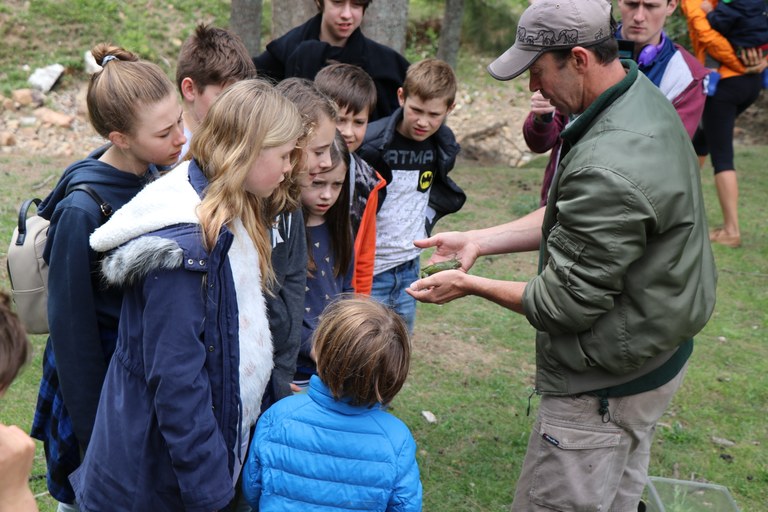
Old records blitzed by new research
One hundred people and eleven ecologists descended on Wombeyan Caves in early November to help improve the flora and fauna record of the well-known and loved national park. Hosted by the Kanangra to Wyangala (K2W) Partnership, the Wombeyan Bioblitz provided people with three days of opportunity to participate in wildlife surveys, looking at everything from orchids to birds, bats and insects.
One hundred people and eleven ecologists descended on Wombeyan Caves in early November to help improve the flora and fauna record of the well-known and loved national park. Hosted by the Kanangra to Wyangala (K2W) Partnership, the Wombeyan Bioblitz provided people with three days of opportunity to participate in wildlife surveys, looking at everything from orchids to birds, bats and insects.
“The idea of a Bioblitz is to connect people with science and survey as much flora and fauna as possible within a set space and time,” says Mary Bonet, K2W Coordinator.
The data collected improves the national biodiversity record and is used to help better-manage important areas of native flora and fauna.
“The results are still being collated, but already we know we have identified seven bird species not previously recorded in the area, and 200 new invertebrate species which will become part of the Australian Museum collection,” Mary says.
The weekend was a great success and opened the door to a new generation of budding scientists by providing hands-on experiences undertaking fieldwork with eminent local ecologists.
“We ran surveys from 6am to 11pm each day,” says Mary. “Saturday was the highlight of the program, with K2W partners creating a festival feel with information stalls, activities and presentations.
Represented on the day were Rocklilly Wombats, Australian Museum, National Parks and Wildlife Service, National Parks Association, Foundation for National Parks and Wildlife and Taronga Zoo.
“The Taronga Zoomobile was a big hit with both kids and adults getting up-close and personal with a number of Taronga residents,” says Mary.
“It was great to see people so interested in learning about possums, snakes, lizards, frogs and insects. The presentation really encouraged empathy and understanding for our animals and the challenges they face in a changing landscape,” she says.
Another highlight was the Welcome to Country and yarning circle held by Gundungurra man, David King. David spoke of his connection to country and told stories of his mother and culture to an eager audience.
“David’s love and respect for county is really inspiring, as was his encouragement of families to explore the traditional tools and materials he had on-hand and to ask lots of questions,” says Mary.
The weekend was rounded-off with the discovery of a rarely-seen spotted-tailed quoll, captured on camera, and a Greater Glider, found sheltering in a nest box previously installed by Trunkey Creek Primary School.
“It’s widely accepted that Great Gliders, the largest of Australia’s glider species with a tail measuring up to 60cm long, won’t use next boxes. However, this one seemed very at home,” says Mary.
“It just goes to show that any habitat improvement, such as weed control, planting, feral animal control, or even next boxes, can contribute to improving habitat where needed.
“The find also shows the importance of updating our plant and animal records so that we know what’s going on in the bush,” says Mary.
The K2W partnership would like to thank its partners and the participants of the Wombeyan Bioblitz for their tremendous effort. The Wombeyan Bioblitz was hosted by the Foundation for National Parks and Wildlife through funding from the NSW Environmental Trust Bush Connect Program and is part of an annual bioblitz program run by K2W.






